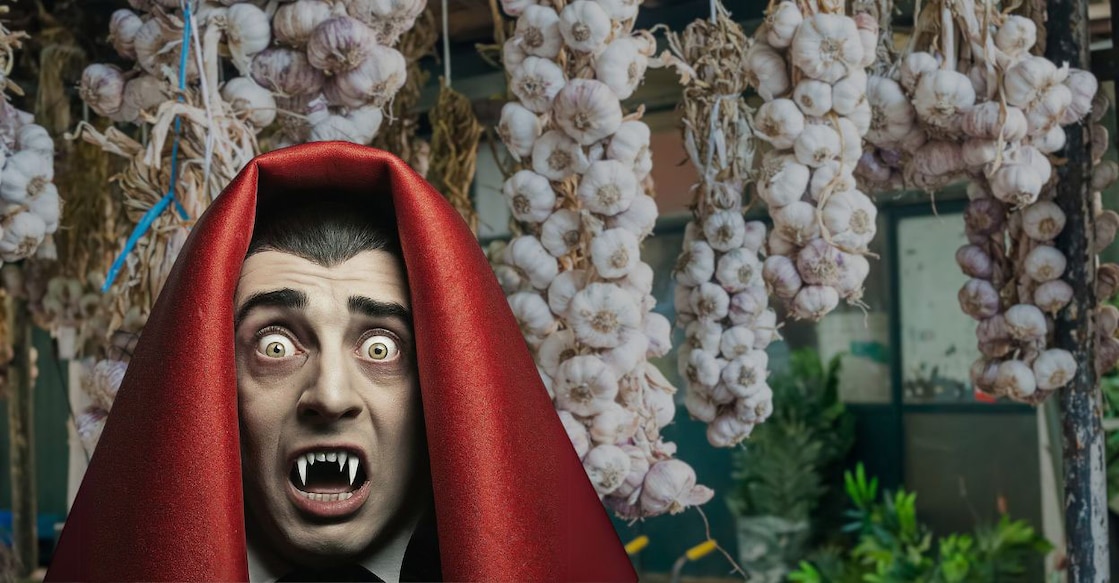From monks to Dracula to the Met Gala: Why garlic keeps getting ghosted

Mail This Article
Garlic. That fiery, fragrant little bulb that turns bland dishes into edible epics. And yet, for all its culinary star power, garlic seems to have made some pretty powerful enemies. We're talking monks, monsters, and Met Gala menu planners. So what is it about garlic that gets it so dramatically ghosted? Let's take a closer look.
Jainism: The non-violent breakup
In Jainism, garlic gets the spiritual side-eye. The reason isn't about taste—it’s metaphysical. Jains follow Ahimsa, the principle of non-violence, down to the microbial level. Root vegetables like garlic are avoided because uprooting them kills the entire plant and disturbs tiny organisms in the soil.
But there's more. According to Jain dietary philosophy, garlic (and onions) are also considered tamasic, meaning they stir up passions and dull the mind—qualities that aren't exactly helpful when you're trying to reach enlightenment. (Source: JSTOR – Jainism and vegetarianism)
Basically, for Jain monks on a path to spiritual liberation, garlic is the party guest who talks too loud, lingers too long, and refuses to calm down. Not great PR.

Dracula: The undead with a sensitive nose
Now to everyone's favourite night-dweller—Dracula. Where does the garlic-aversion myth come from? Turns out, it's a blend of old-school superstition and modern horror storytelling.
Historically, garlic was used in Eastern European folk medicine as a protection against evil—not just vampires, but also witches, disease, and the general supernatural riffraff. In fact, a Reddit thread on r/vampires explores how garlic was hung over doors and rubbed on children’s foreheads to ward off malevolent forces.
Then came Bram Stoker’s Dracula (1897), where Van Helsing used garlic flowers as vampire repellents. The myth caught fire and never looked back. Academically, as discussed in “Digest: A Journal of Foodways and Culture”, garlic may symbolize life and vitality—everything a vampire isn’t. It’s not so much the bulb itself, but what it represents: the opposite of decay.
So yes, Dracula might actually just be deeply offended by your robust immune system.
The Met Gala: Garlic's haute couture exile
While monks and monsters may have metaphysical or folkloric reasons, the Met Gala keeps it simple: no garlic because, darling, the breath!
As reported by the New York Post and others, Anna Wintour has banned garlic (along with onions and chives) from the Met Gala menu to keep conversations fragrant and photo ops unblemished. This is haute cuisine with a side of halitosis prevention. After all, nothing ruins a red carpet faster than an herby whiff of aioli breath during a Vogue interview.

So, why all the garlic ghosting?
Despite its fame in kitchens and home remedies, garlic seems to get systematically snubbed when things get spiritual, supernatural, or superficial. The common thread? Control. Jains avoid garlic to maintain spiritual and ethical discipline. Vampires (and their creators) avoid it as a symbol of purity overpowering decay. The Met Gala avoids it to control image and social interaction.
In short, garlic is too wild, earthy, and real for certain circles. It stinks (literally) of life—and not everyone’s ready for that. So next time you sauté a clove, remember: you're embracing something powerful. Just maybe don't bring it to a vampire hunt, a Jain monastery, or a couture carpet.

